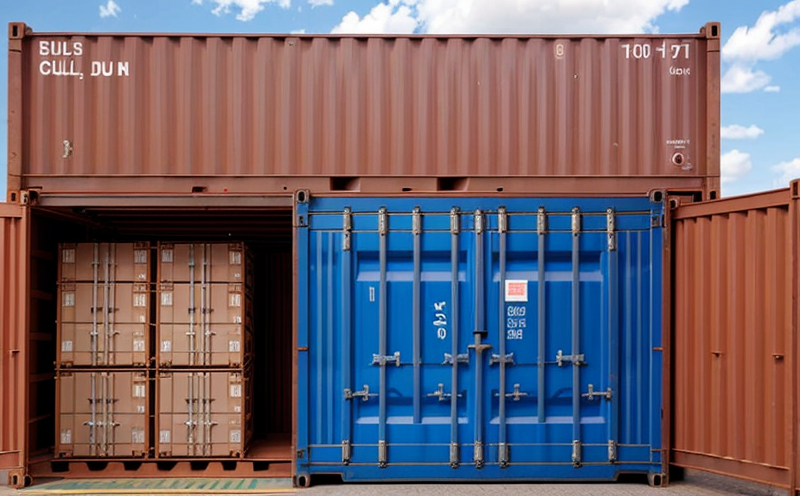USP Silicone Oil Migration Testing
The United States Pharmacopeia (USP) provides a comprehensive set of quality standards, including testing procedures designed to ensure that pharmaceutical products are safe and effective. One such test is the USP Silicone Oil Migration Testing, which focuses on the migration of silicone oil from packaging or container closure systems into contact with drug product. This test is crucial for ensuring compliance with pharmaceutical regulations and maintaining patient safety.
Pharmaceutical packaging must protect the integrity of the drug product throughout its shelf life under specified storage conditions. Silicone oils are often used in medical devices, pharmaceuticals, and personal care products due to their lubricity properties; however, they can also migrate into contact with the drug substance or container closure system materials over time. This migration may lead to contamination, alteration of efficacy, or even degradation of the product.
The primary objective of USP Silicone Oil Migration Testing is to determine whether silicone oil has migrated from the container closure system or packaging material into direct contact with the drug product during storage and distribution. The test involves placing a solution containing the drug substance in containers made from the suspected materials, incubating them under controlled conditions, and then analyzing for any detectable levels of silicone oil.
Compliance with this testing requirement is mandated by USP Chapter 165, which specifies that silicone oil migration should be evaluated when there is a potential risk of interaction between the drug product and container closure system. This includes instances where silicone oil may come into contact with the active pharmaceutical ingredient (API), excipients, or packaging materials.
Conducting this test helps manufacturers ensure that their products meet stringent regulatory requirements set forth by organizations like the FDA and EMA. It also demonstrates a commitment to quality assurance and patient safety—a key priority for all stakeholders involved in drug development and production.
Scope and Methodology
| Test Procedure | Parameters |
|---|---|
| Incubation Time | 10 days at 37°C, relative humidity of 65% |
| Sample Preparation | Newly sterilized containers pre-filled with the drug substance solution |
| Sampling Points | At day zero and post-incubation (day ten) |
| Analytical Method | HPLC (High-Performance Liquid Chromatography) analysis for detection of silicone oil |
The USP Silicone Oil Migration Testing follows a standardized procedure to ensure accurate and consistent results. The process begins by preparing new, sterilized containers that are pre-filled with the drug substance solution. These containers are then incubated under controlled conditions for 10 days at 37°C with a relative humidity of 65%. At both day zero (initial) and post-incubation (day ten), samples are collected from these containers.
The collected samples undergo HPLC analysis to detect any trace amounts of silicone oil that may have migrated into the drug substance solution. This analytical method allows for precise quantification, providing evidence of whether or not there was significant migration during the specified time frame and environmental conditions.
Benefits
The USP Silicone Oil Migration Testing offers several benefits to manufacturers and regulators alike:
- Patient Safety: Ensures that silicone oil does not migrate into the drug substance, thereby preventing potential health risks.
- Compliance: Meets regulatory requirements set by organizations like USP, FDA, and EMA.
- Risk Management: Identifies early any issues related to container closure systems or packaging materials that could impact product quality.
- Quality Assurance: Provides assurance that the drug product remains stable throughout its shelf life under specified storage conditions.
By conducting this test, pharmaceutical companies can enhance their reputation for producing high-quality products and adhere to industry best practices. This not only protects public health but also fosters trust between manufacturers and consumers.
Industry Applications
- Medical Device Manufacturers: Ensuring silicone oil does not migrate into contact with the device or its components.
- Pharmaceutical Companies: Verifying that silicone oil does not interact adversely with drug products stored in containers made from suspect materials.
- Personal Care Product Producers: Guaranteeing that silicone oil remains confined within packaging or applicators without affecting the product's efficacy.
- Regulatory Agencies: Using this test as part of their quality control measures to ensure compliance with international standards.
The USP Silicone Oil Migration Testing is applicable across various sectors where silicone oil may come into contact with sensitive materials or products. By validating that there is minimal migration, these entities can maintain the integrity and safety of their final goods.





